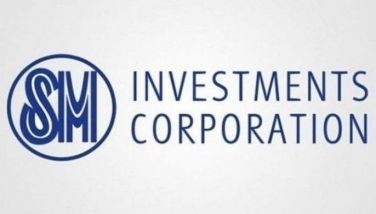Finally, an Air Force with ‘force’
We have to give due credit to the administration of President Aquino for putting the “force” back in the Philippine Air Force and ushering it into the “supersonic age” with the delivery of two FA-50 fighter jets from Korea, boosting the morale of PAF personnel. While the aircraft may be comparatively small, this is the first time the Philippines has purchased fighter jets since the last of the F5s were retired a decade ago, after maintenance proved to be very costly. The Philippines has purchased a total of 12 FA-50 aircraft, with the rest to be delivered in batches until 2017.
One of the things PNoy had promised to do is modernize the AFP and upgrade hardware to enhance the military’s territorial defense and maritime security capabilities. The AFP is confident it will attain “minimum credible defense posture” and people see this starting to take shape with the acquisition of more ships and aircraft down the line.
Admittedly, the Philippines has one of the smallest military budgets in Asia and while the $3.6 billion slated for next year is but an insignificant fraction compared to China’s current $145 billion defense budget, it sends a strong message the Philippines is taking external security issues very seriously – especially in the wake of China’s continuing aggression in the disputed maritime territories in the South China Sea. According to insiders, this latest development should put to rest doubts the AFP modernization plan is dead in the water
‘Made in China’ meds could upset big pharma
China is known as the world’s largest manufacturer with virtually every product from wearables to smartphones, food and even unmanned aerial systems now being manufactured by Chinese companies. And now, the Chinese are looking at the drug manufacturing industry with plans to launch “made in China” medicines that could put a dent on the profitability of international pharmaceutical companies.
Next to the United States, China happens to be the second biggest market for medicines especially for illnesses such as diabetes, cancer as well as chronic heart and pulmonary diseases. According to a study by the International Diabetes Federation, China has the biggest number of diabetics currently estimated at 110 million, with the number projected to increase to 151 million 25 years from now or by 2040. Naturally, this has made the Chinese market a top target for insulin manufacturers, with many multinational companies opening manufacturing plants in China since 1995.
Reports indicate that Chinese drug manufacturers have posted increased sales by as much as 12 percent this year – double the growth posted by multinational companies whose sales have registered significant slumps. Among the challenges faced by foreign companies include the preferential treatment that local manufacturers get as far as restrictions and compliance to regulations are concerned, an industry insider disclosed.
Authorities have also made it mandatory for hospitals to fill a quota of domestic product prescriptions from those in the National Essential Drug List of NEDL. Significantly, strict pricing requirements are also placed on foreign players wishing to have their products included in the hospital pharmacy – forcing many to drop out since they cannot compete with lower priced locally manufactured medicines. The prevalent use of traditional Chinese medicine is also one issue multinationals face, with alternative meds also used to treat chronic conditions such as hepatitis or diabetes, among many others.
Interestingly, German company General Electric recently delivered “pre-fabricated” biopharmaceutical factories to China – the first country to receive these “off-shelf pre-made factories” also known as KUBio that feature controlled environments with piping, heating and ventilation installed – clean rooms and toilets included. These ready-made modular facilities (with the building’s shell initially delivered followed by the other components and facilities) will certainly cut capital expenditures as costs for building a traditional manufacturing plant can be anywhere from $200 million up to $500 million.
According to GE, the KUBio can reduce cost by as much as 45 percent, with disposable equipment also used to save on cleaning and steaming expenses. The question among many, however, is how safe these pre-fab factories are, and whether the products manufactured are up to par as far as quality is concerned.
Pollution alert up in Beijing
Last Saturday’s pollution levels registered in Beijing may be the worst ever seen in China yet, with the readings reaching almost 20 times higher than the levels set by the World Health Organization as safe. The issue of pollution has been hounding China, particularly in the northeast area where most industries are located. And while China has been implementing strict regulations, its reliance on “dirty coal” for its energy and industrial requirements will make it difficult to curb pollution.
China has been described as the nation with the world’s biggest carbon emission, with accusations it has been “under reporting” its coal consumption by as much as 17 percent every year. A report by the New York Times quoted a former Chinese energy official as saying “China has been burning so much more coal” than previously believed, and it looks like it is an even bigger emitter than previously imagined – the reason why China’s air quality continues to be very poor.
The report comes on the heels of the Paris climate change talks with China saying it will peak carbon emissions by 2030 – meaning it is not about to reduce its coal consumption, according to observers. Reports also say China released 10 billion tons of carbon in 2013 – almost twice as much as the US. Ironically, Chinese authorities claim that pollution targets set five years earlier have been reached, even as Beijing was covered in smog with the pollution alert set at orange – the second highest – with the concentration of carcinogenic particles of PM2.5 registering at 400 on a scale where 50 is already considered dangerous to human health.
***
Email: spybits08@gmail.com
- Latest
- Trending


























